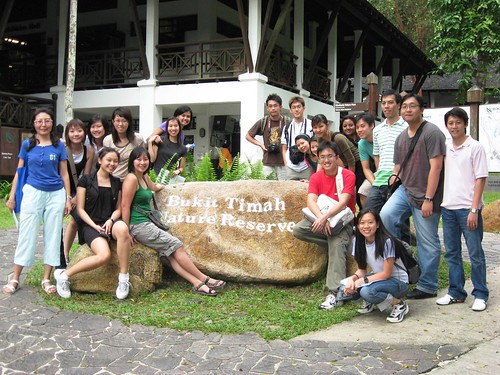
Part of my Geography course in NIE requires us to formulate and carry out a fieldwork package. One of the groups decided to devise a package based on tropical rainforests, so we rushed down to Bukit Timah Nature Reserve immediately after our Educational Psychology class.
By the time the entire class had gathered, it was already past 5 in the evening. I did not really get the chance to fully explore and enjoy the place, though I have to admit, my energy level was quite low after an entire day of classes anyway.

When we first arrived, we milled around the boulder at the entrance to the nature reserve and took photos, which was where some of us spotted the slender squirrel (Sundasciurus tenuis) that was climbing up and down one of the trees beside the footpath. As usual, I was unable to snap any pictures of such an agile and active small mammal.
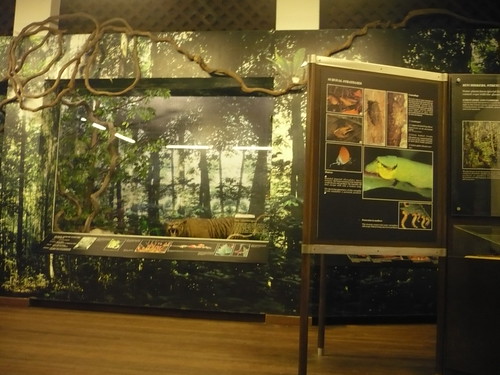
The first activity involved us filling in answers on a handout, with answers derived from the information panels found within the Visitor Centre.
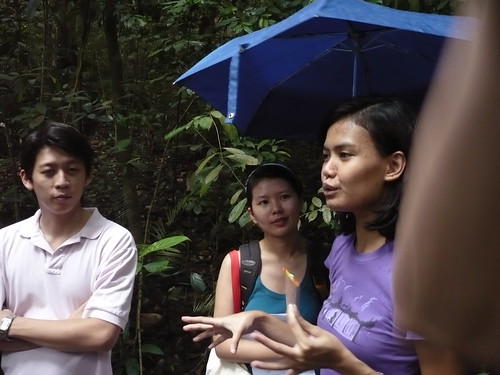
Following that, we were supposed to do some activities along the South View Path, and learn about some of the special adaptations of rainforest plants, but unfortunately, it soon began to rain quite heavily, and we had to return to the Visitor Centre. It was quite a downer for the group, who had done quite a bit of planning. But such is the nature of outdoor field trips; one is always subject to the whims and fancies of the weather.
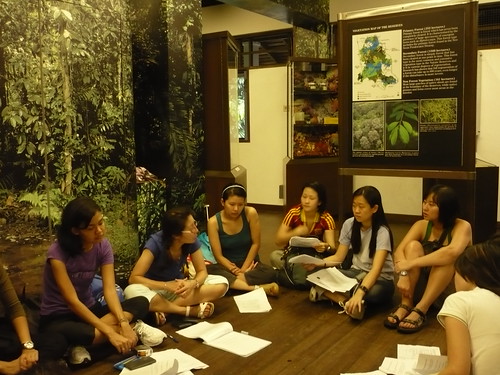
So we sat inside the Visitor Centre and discussed various aspects of fieldwork, and summarised our experiences over the past 4 sessions of outdoor field trips. A/P Ivy Tan and I really work on the same frequency; she mentioned a lot about the various guided walks that one can participate in at many of our nature areas. Maybe she might be interested in the upcoming Naked Hermit Crabs walks in Sentosa this June.
It was just slightly past 6.15 when we finished, and the rain had cleared up, so we decided to at least walk through Hindhede Nature Park. Unfortunately, I did not manage to spot any wildlife along this entire stretch. It's at times like these that I wish I knew more about the specific plants that can be seen along the trails; pretty much all I could identify was the fishtail palm (Caryota mitis).
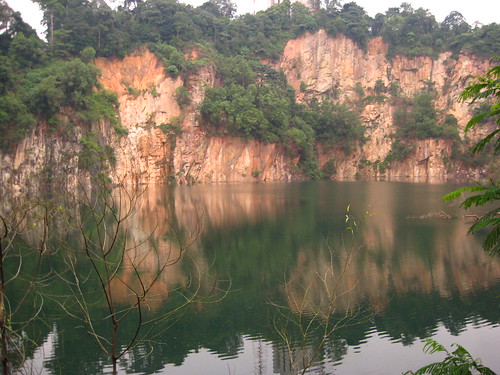
The view of the old quarry is great though. Now all we need is a nesting colony of grey herons (Ardea cinerea) and little egrets (Egretta garzetta), or even a couple of white-bellied sea eagles (Haliaeetus leucogaster), just like on Pulau Ubin.

(Photo courtesy of Ivy Tan)
Here's 18 of us future Geography teachers, accompanied by one of our tutors, Associate Professor Ivy Tan. Too bad Jennifer was sick, and Valerie had an old back injury, so they could not join us.
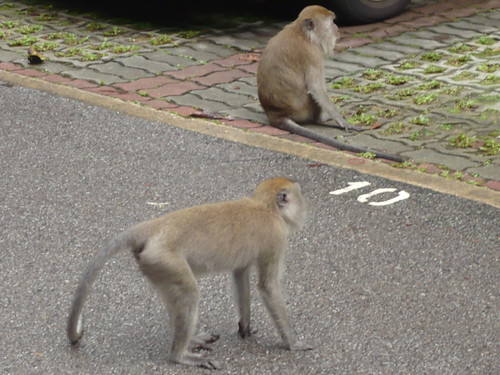
At least it wasn't a total washout in terms of wildlife. When we returned to the carpark, there was a trio of long-tailed macaques (Macaca fascicularis), which included a youngster.
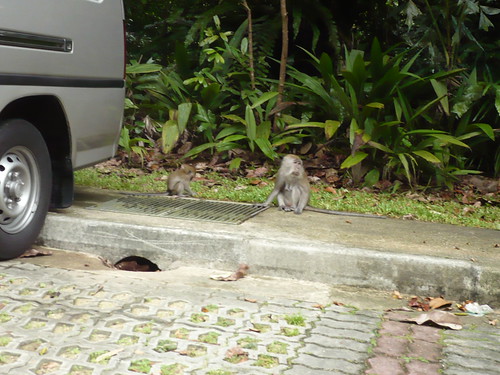
Thankfully, they were just cautiously foraging, and were not being fed by the other people in the carpark. Feeding of wildlife tends to cause plenty of trouble, and in Singapore, more often than not, it is the monkeys who are on the losing end. Here is a webpage that explains why wild monkeys should never be fed.
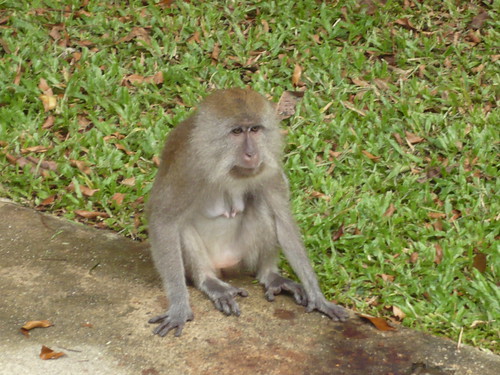
Further down Hindhede Drive, on our way out towards Bukit Timah Road, we encountered even more macaques.
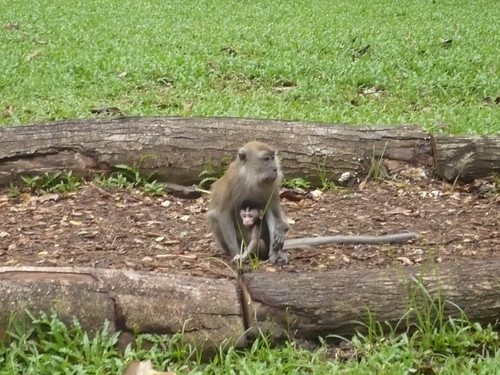
Including this mother and infant.
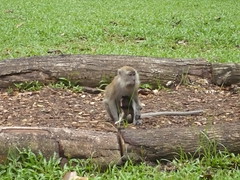
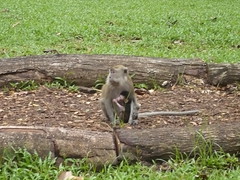
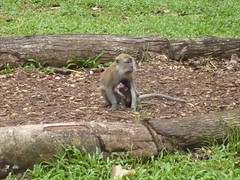
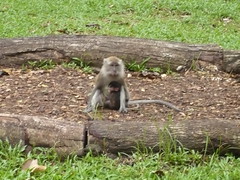
The baby monkey started to suckle while we were there. Isn't it simply adorable?
While we were watching the monkeys, I noticed a flash of movement, as across the road, a white-throated kingfisher (Halcyon smyrnensis) swooped towards the grass, picked something up in its large red beak, and then flew off. But the focus of our attention was still on the macaques, the second most common primate species found in Singapore (after human beings, of course).
We'd spent less than 2 hours hanging around the outskirts, and we already managed to spot 2 of Singapore's indigenous forest mammals. I'm just wondering when I'll have the opportunity to properly explore every available trail in the reserve, the way I've spent an entire day from dawn to dusk at Sungei Buloh Wetlands Reserve.